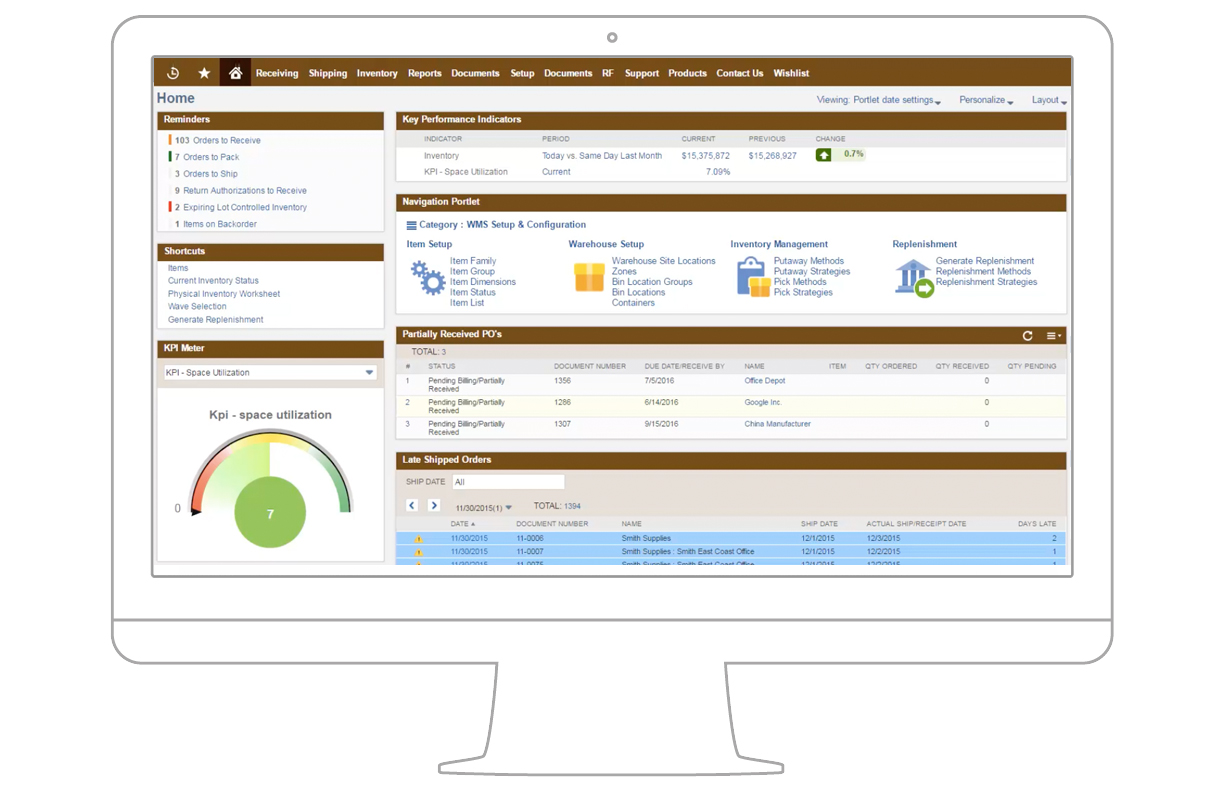Warehouse and Order Fulfillment
Streamline your warehousing operations and deliver products on-time at optimal cost
Smart businesses understand that controlling inventory, fulfillment and shipping costs is essential for success. Companies are constantly striving to improve their warehouse operations by increasing agility, visibility and labor efficiency. This requires use of best practices combined with a sophisticated Warehouse Management System (WMS) that optimally manages all resources within the distribution operations while minimizing the total cost of operation or ownership (TCO).
The NetSuite WMS solution enables organizations to optimally manage their distribution operations with RF device directed putaway and picking tasks driven by customized user defined strategies and advanced capabilities like wave management, cartonization, cycle count planning, real time inventory updates and integration with shipping systems.
Features
Inbound Logistics
WMS
Outbound Logistics
Inventory Management
Benefits
Native, embedded solution options
We have the functionality for your business regardless of size and complexity.
Real-time Updates
No syncing of information between systems, everything is updated in real-time.
Support for global business
NetSuite is operated globally by over 21,000 customers.


































